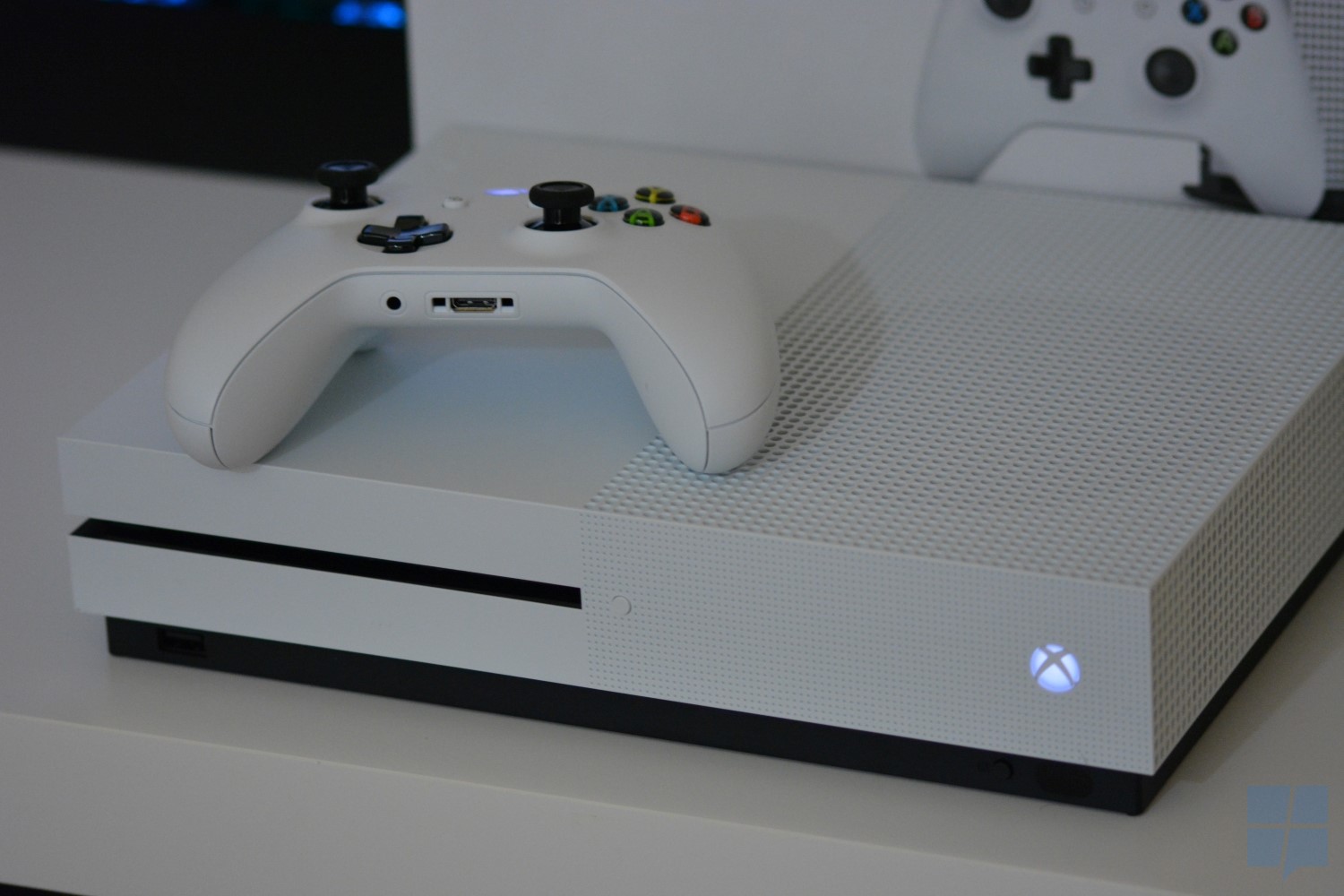Introduction
Welcome to the world of gaming, where the battle for superior graphics and immersive gameplay is constantly evolving. One name that has become synonymous with gaming excellence is Xbox One. Developed by Microsoft, Xbox One is a powerhouse gaming console that offers an unparalleled gaming experience.
When it comes to gaming, the graphics card is a critical component that determines the visual quality and performance of the games we play. In this article, we will delve into the fascinating world of Xbox One’s graphics card and explore its capabilities, architecture, and how it stands up against other gaming consoles.
Whether you’re an avid gamer or simply curious about the technical aspects of gaming consoles, this article will provide a comprehensive understanding of the graphics card that powers Xbox One and the impact it has on your gaming experience. So sit back, grab your controller, and let’s dive into the world of Xbox One’s graphics card.
Throughout this article, we will explore the specifications, GPU architecture, performance, and future upgrades of Xbox One’s graphics card. By the end, you’ll have a clear understanding of the graphics prowess that sets Xbox One apart from its competitors.
Overview of Xbox One
Xbox One, released in 2013, is the eighth generation gaming console developed by Microsoft. It offers a complete entertainment package, combining gaming, streaming services, and multimedia functionality into a single device. It quickly gained popularity among gamers due to its impressive hardware capabilities, immersive gaming experience, and a wide range of exclusive titles.
With Xbox One, Microsoft aimed to create a gaming console that not only satisfied hardcore gamers but also appealed to a broader audience. The console features a sleek and modern design, with a focus on user-friendly interface and seamless integration with various entertainment apps.
One of the standout features of Xbox One is its ability to connect with the Xbox Live service, offering a vast online gaming community, multiplayer capabilities, and access to a plethora of digital content. Additionally, Xbox Game Pass provides subscribers with a vast library of games to choose from, further enhancing the gaming experience.
Beyond gaming, Xbox One allows users to stream movies, TV shows, and music, making it a versatile entertainment hub for the whole family. It also supports popular streaming services like Netflix, Hulu, and Amazon Prime Video, providing a wide range of entertainment options.
Overall, Xbox One stands as a reliable and powerful gaming console that has redefined the gaming industry. Its innovative features, extensive game library, and multimedia capabilities make it a favorite among gamers and entertainment enthusiasts alike.
Specifications of Xbox One Graphics Card
The graphics card is an essential component in any gaming console, and Xbox One is no exception. The graphics processing unit (GPU) in Xbox One is a custom-made chip designed by AMD specifically for Microsoft’s console. Let’s take a closer look at the specifications of Xbox One’s graphics card:
- Architecture: Xbox One features an AMD Radeon GPU, utilizing the GCN (Graphics Core Next) architecture. This architecture is known for its scalability, performance, and efficiency.
- Compute Units: The GPU in Xbox One comes with 12 compute units, each housing 64 shader cores. This setup allows for parallel processing and efficient rendering of complex graphics.
- Memory: Xbox One’s graphics card is equipped with 8GB of DDR3 RAM. This high-speed memory ensures smooth gameplay and quick data transfers between the GPU and other components.
- Memory Bandwidth: The graphics card boasts a memory bandwidth of 68.26 GB/s, further enhancing its ability to handle memory-intensive tasks and deliver stunning visuals.
- Resolution Support: Xbox One is capable of delivering breathtaking visuals with a maximum resolution of 1080p. This ensures crisp and detailed graphics for a truly immersive gaming experience.
- Texture Fill Rate: The graphics card in Xbox One has a texture fill rate of 44 GT/s. This means it can render textures onto game objects with incredible speed, resulting in realistic and detailed visuals.
These specifications highlight the power and capability of Xbox One’s graphics card. By harnessing the latest GPU technology, Xbox One delivers stunning graphics, smooth frame rates, and realistic visual effects, elevating your gaming experience to new heights.
GPU Architecture of Xbox One
The GPU architecture plays a crucial role in determining the performance and capabilities of a graphics card. In the case of Xbox One, the graphics card boasts an AMD Radeon GPU built on the GCN (Graphics Core Next) architecture. Let’s explore the key features of this architecture and how it contributes to the gaming experience on Xbox One:
Parallel Processing: The GCN architecture is designed to handle parallel processing efficiently. With Xbox One’s GPU consisting of 12 compute units, each housing 64 shader cores, the architecture enables the GPU to process multiple tasks simultaneously. This parallel processing capability allows for faster rendering, smoother frame rates, and more complex visual effects.
Tessellation: Xbox One’s GPU architecture supports hardware tessellation, a technique that enhances the visual quality of objects in a game by adding more details and smoothness to their surfaces. Tessellation improves the realism and complexity of graphics, bringing virtual worlds to life on your screen.
Unified Shader Architecture: The GCN architecture adopts the concept of unified shaders, allowing the GPU to allocate processing power dynamically based on the demands of different tasks. This flexibility enables the GPU to handle graphics-intensive tasks efficiently, resulting in better performance with reduced power consumption.
GPGPU Support: General-Purpose Graphics Processing Unit (GPGPU) support is another notable feature of the GCN architecture. This feature enables the GPU to perform non-graphical computational tasks, such as physics simulations and artificial intelligence calculations, in addition to rendering graphics. GPGPU support in Xbox One’s GPU enhances the overall computing power of the console, enabling developers to create more immersive and realistic gaming experiences.
Memory and Bandwidth Optimization: The GCN architecture in Xbox One’s GPU is optimized for efficient memory management and bandwidth utilization. This optimization ensures that the GPU can access and process data quickly, resulting in faster loading times, smooth gameplay, and seamless transitions between different game environments.
The GPU architecture of Xbox One showcases the continuous advancements in graphical processing technology. By harnessing the power of the GCN architecture, Xbox One is able to deliver stunning visuals, realistic effects, and a truly immersive gaming experience.
Comparison with Other Gaming Consoles
When it comes to gaming consoles, there are several options available in the market. Let’s compare Xbox One’s graphics card with the graphics cards of other popular gaming consoles to understand how it stacks up:
PlayStation 4: The PlayStation 4, developed by Sony, features a graphics card based on AMD’s GCN architecture, similar to Xbox One. Both consoles have similar GPU specifications, including the number of compute units and memory bandwidth. However, Xbox One has a slightly higher clock speed, giving it a slight advantage in terms of performance.
Nintendo Switch: The Nintendo Switch takes a different approach with its graphics capabilities. It utilizes a custom NVIDIA Tegra chip, combining a traditional graphics card with mobile technology. While the Nintendo Switch may not match the raw power of Xbox One’s graphics card, it offers the unique advantage of portability and a versatile gaming experience.
PC Gaming: When comparing Xbox One to PC gaming, it’s important to note that PC graphics cards offer a wide range of options, from entry-level to high-end cards. High-end PC graphics cards generally outperform Xbox One’s graphics card in terms of raw performance and visual fidelity. However, the optimized architecture and dedicated software development for consoles like Xbox One often result in optimized gaming experiences that can rival or even surpass the graphical capabilities of some PCs.
While Xbox One’s graphics card may not be the most powerful on the market, it offers a well-balanced combination of performance, power efficiency, and optimized gaming experiences. The console’s integration with the Xbox Live service, exclusive game titles, and overall gaming ecosystem also contribute to its appeal.
Ultimately, the choice of gaming console depends on individual preferences, budget, and gaming needs. Xbox One’s graphics card holds its ground against its competitors, delivering impressive visuals and an immersive gaming experience.
Performance and Visual Capabilities
Xbox One’s graphics card is designed to deliver exceptional performance and stunning visuals, providing gamers with a truly immersive gaming experience. Let’s explore the performance and visual capabilities enabled by the graphics card:
Smooth Gameplay: The powerful GPU, coupled with the fast DDR3 RAM, allows Xbox One to handle graphically demanding games with ease. Gamers can expect smooth and responsive gameplay, ensuring that every action and movement is accurately represented on the screen.
High-Resolution Gaming: Xbox One supports a maximum resolution of 1080p, allowing games to be displayed with incredible detail and clarity. This high resolution enhances the visual experience, showcasing vibrant colors, sharp textures, and realistic lighting effects.
Enhanced Visual Effects: The graphics card’s advanced architecture and processing capabilities enable Xbox One to render complex visual effects seamlessly. Whether it’s dynamic lighting and shadows, realistic particle effects, or detailed character models, the console can handle these effects with ease, enhancing the overall visual quality of games.
Framerate Stability: Xbox One aims to provide a stable and consistent framerate throughout gameplay. The graphics card ensures that games run at a smooth and consistent framerate, preventing screen tearing and stuttering, which can disrupt the gaming experience.
Effective V-Sync: V-Sync (Vertical Sync) is a technology that prevents the display from showing incomplete frames, resulting in a smoother gaming experience. Xbox One’s graphics card supports effective V-Sync implementation, reducing screen tearing and delivering a more polished visual presentation.
Multi-Screen Support: Xbox One’s graphics card also supports multi-screen setups, allowing gamers to connect multiple monitors or TVs for an extended gaming display. This feature provides a more immersive experience by expanding the field of view and enhancing peripheral awareness in certain games.
Overall, Xbox One’s graphics card delivers impressive performance and visual capabilities, pushing the boundaries of what is possible in the world of console gaming. Whether you’re exploring vast open-world environments, engaging in intense multiplayer battles, or experiencing cinematic storytelling, Xbox One’s graphics card ensures that you have an immersive and visually stunning gaming experience.
Future Upgrades and Enhancements
The world of gaming is constantly evolving, with new technologies and innovations pushing the boundaries of what is possible. Xbox One’s graphics card, while already impressive, is not exempt from the potential for future upgrades and enhancements. Here are some possibilities for the future of Xbox One’s graphics card:
Increased Performance: As technology advances, we can expect future iterations of Xbox One to feature more powerful graphics cards with increased performance capabilities. This would result in even more stunning visuals, smoother gameplay, and enhanced overall gaming experiences.
Resolution and Frame Rate Improvements: With the continuous evolution of display technology, future updates to Xbox One’s graphics card could support higher display resolutions, such as 4K or even 8K. Additionally, improved rendering techniques and hardware optimizations could lead to higher frame rates, providing an even more fluid and responsive gaming experience.
Ray Tracing: Ray tracing is a rendering technique that simulates the behavior of light in real-time, creating incredibly realistic lighting and reflections in games. While Xbox One doesn’t currently support ray tracing, it is a possibility for future upgrades. The integration of ray tracing technology into the graphics card could bring a new level of visual fidelity and immersion to Xbox One games.
DLSS (Deep Learning Super Sampling): DLSS is an AI-based upscaling technique developed by NVIDIA that uses machine learning to enhance the visual quality of games while maintaining high performance. The integration of DLSS into Xbox One’s graphics card could result in improved image sharpness, reduced aliasing, and potentially even support for higher resolutions without sacrificing performance.
Hardware Acceleration of Real-Time Ray Tracing: Hardware-specific advancements in real-time ray tracing could also be implemented in future upgrades to Xbox One’s graphics card. This would allow games to benefit from the realistic lighting and shadow effects that real-time ray tracing provides, without a significant impact on performance.
It’s important to note that any future upgrades or enhancements to Xbox One’s graphics card would likely come in the form of a new console iteration or an external module, rather than a direct upgrade to existing consoles. Nevertheless, these advancements would bring exciting possibilities for the future of Xbox gaming, further pushing the boundaries of visual fidelity and immersion.
Conclusion
Xbox One’s graphics card stands as a powerful and impressive component that drives the visual prowess and immersive gaming experience of the console. With its custom-made AMD Radeon GPU and GCN architecture, Xbox One delivers stunning graphics, smooth gameplay, and a wide range of visual effects.
Throughout this article, we have explored the specifications, GPU architecture, performance, and visual capabilities of Xbox One’s graphics card. We have seen how it compares to other gaming consoles, such as the PlayStation 4 and Nintendo Switch, showcasing its strengths and unique features.
The graphics card in Xbox One enables smooth gameplay, high-resolution gaming, and enhanced visual effects. It ensures stable framerates, effective V-Sync, and even supports multi-screen setups for a more immersive gaming environment.
Looking ahead, the future of Xbox One’s graphics card holds exciting possibilities. Potential upgrades and enhancements may include increased performance, support for higher resolutions and frame rates, integration of ray tracing technology, and even hardware acceleration of real-time ray tracing. These advancements would further elevate the visual fidelity and immersion of Xbox gaming experiences.
Overall, Xbox One’s graphics card is a testament to the continuous advancements in gaming technology. It has played a crucial role in establishing Xbox One as a top-tier gaming console, providing gamers with a captivating and visually stunning gaming experience.
Whether you’re exploring vast open worlds, engaging in intense battles, or diving into immersive storytelling, Xbox One’s graphics card ensures that the digital worlds you explore come to life with breathtaking visuals. It sets the stage for countless adventures and memorable gaming moments that will keep you enthralled for hours on end.

























